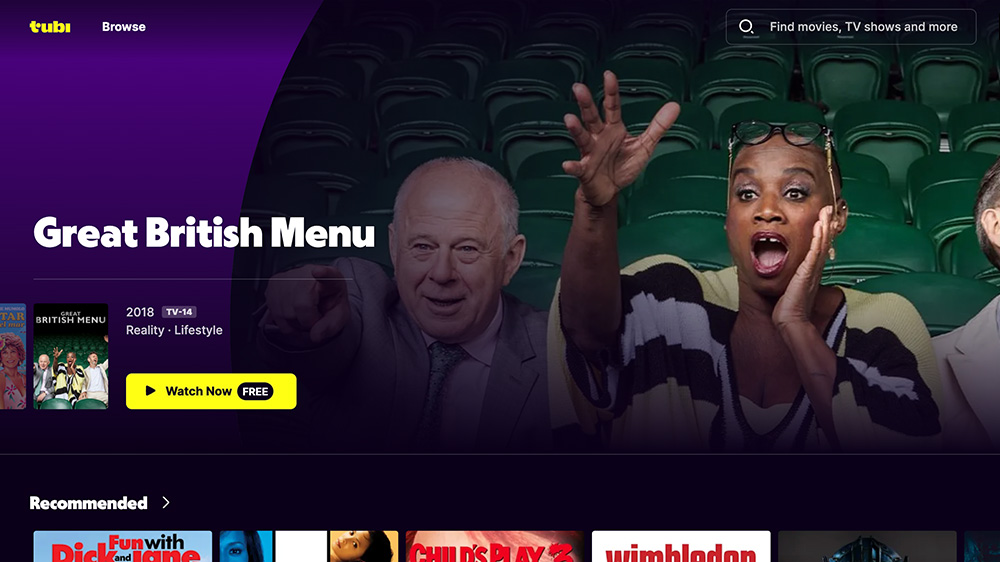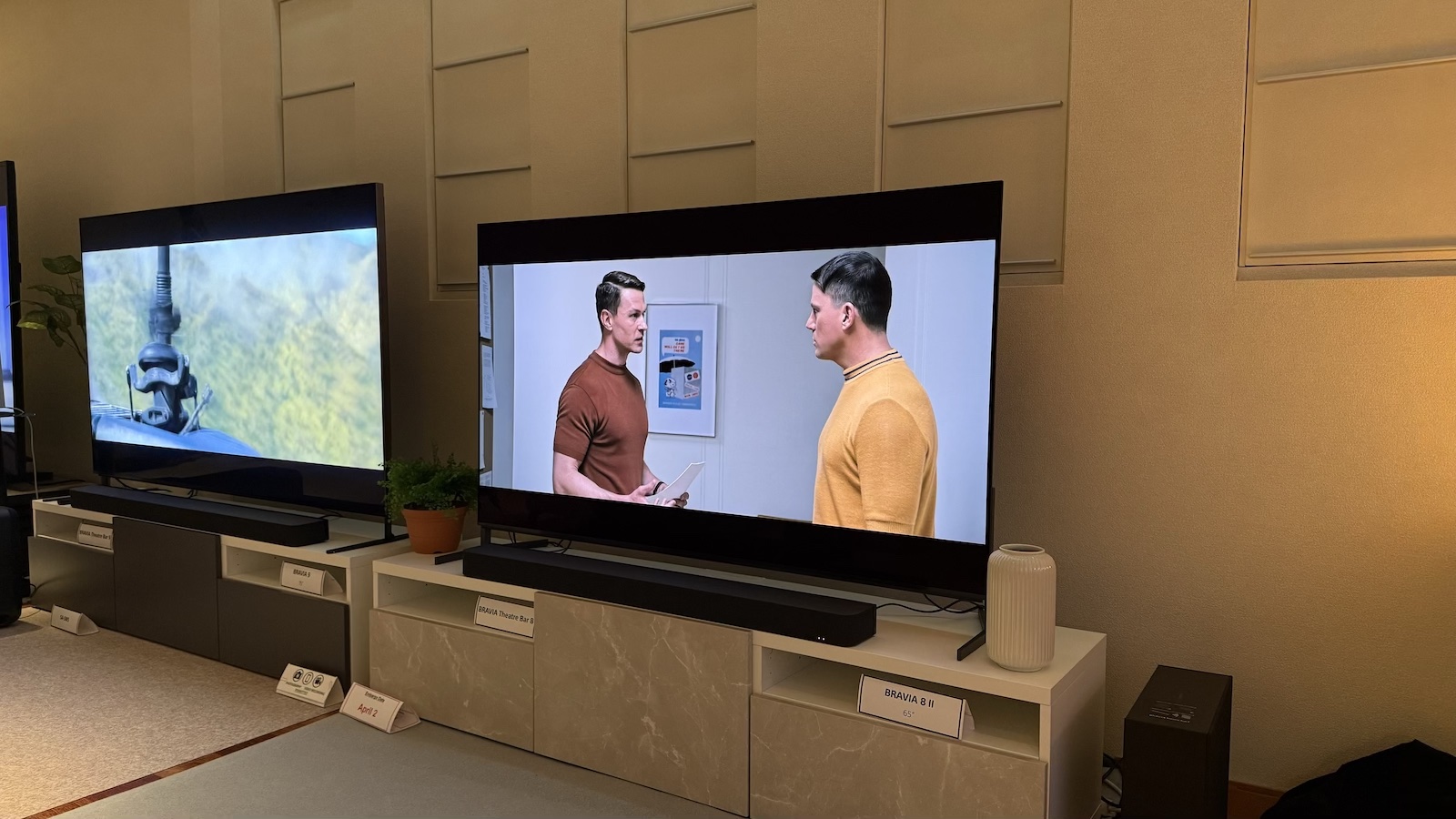Free Netflix rival Tubi launches in the UK – and its standout new movie is 100% on Rotten Tomatoes
Watch 20,000 movies and TV episodes without parting with a penny – including a Tubi Original horror hit

If you're looking for a free Netflix alternative and have binged your way through iPlayer, ITVX and the like, good news: America's most-watched free TV and movie streaming service has launched in the UK.
Tubi, Fox Corporation’s ad-supported service, currently offers over 20,000 movies and TV episodes from major distributors such as Disney, Lionsgate, NBCUniversal, and Sony Pictures Entertainment, as well as 16 Tubi Originals including The Adams Family's period horror hit Where The Devil Roams, new drag queen vs vampire horror-comedy Slay and Russia/Ukraine war documentary City Under Fire.
“We are launching with one of the largest and most diverse content libraries in the UK," said Tubi CEO Anjali Sud.
The catalogue is available on its iOS and Android mobile apps, web player (https://tubitv.com) and, in the coming weeks, "every major connected TV platform".
Tubi debuted in the US just over a year ago and now has nearly 80 million monthly active users, making it the country's fastest-growing streaming service in that period. The app made our list of the 10 best movie apps for Android for its free-of-charge library and ease of use.
So what should commence your Tubi journey? Well, a new movie with a 100 per cent rating on Rotten Tomatoes wouldn't be a bad place to start...
Where the Devil Roams (2023) was a fan favourite on last year's horror festival circuit. This Great Depression-era horror from the makers of Hellbender and The Deeper You Dig (Tony and Zelda Adams and Toby Poser) follows a family of carnies on a travelling killing spree as they traverse the macabre, dying carnival scene. It's grim and grotesque in all the right ways, relishing in the directors' familiar themes of fringe existences, family dynamics and dark, demonic deviltry.
Get the What Hi-Fi? Newsletter
The latest hi-fi, home cinema and tech news, reviews, buying advice and deals, direct to your inbox.
Not a horror fan? You could do a lot, lot worse than to make your Friday night movie Yes, God, Yes (2019). With a 92 per cent Rotten Tomatoes rating, this hilarious and utterly endearing coming-of-age drama sees a Catholic teenager (Natalia Dyer of Stranger Things) face a moral conundrum as, upon discovering masturbation via a racy AOL chat, she struggles to suppress her newfound sexual awakening in the face of eternal damnation. Dyer is flawless while director Karen Maine confidently transforms her 2017 short into a fun and frolicking feature debut worth the extra runtime.
MORE:
The best Dolby Atmos movies of the decade (so far) to test your home cinema
This week: celebrating Home Cinema Week on What Hi-Fi?
How to build the perfect home cinema system
How to cancel Netflix on TV and mobile in 3 easy steps
Becky is the managing editor of What Hi-Fi? and, since her recent move to Melbourne, also the editor of the brand's sister magazines Down Under – Australian Hi-Fi and Audio Esoterica. During her 11+ years in the hi-fi industry, she has reviewed all manner of audio gear, from budget amplifiers to high-end speakers, and particularly specialises in headphones and head-fi devices. In her spare time, Becky can often be found running, watching Liverpool FC and horror movies, and hunting for gluten-free cake.
-
Gnik_Nus Ad-supported streaming services are a step in the right direction. Paid subscriptions are making content exclusive which means many people who don’t subscribe don’t see that stuff, at least not until is broadcast on tv, which can be years, it at all.Reply
By limiting content to subscribers, merchandising market shrinks, and the general population loses interest in content they won’t see and subscribers eventually get bored. Companies like Disney want kids to see their content so they can buy toys from their stores. At this time a lot of their exclusive Disney+ content is unavailable to so many people who don’t subscribe but might have bought a few pin badges or dolls. Eventually they will see ad-supported content as one way of growing their audience.
The best way to get content out there is by offering it for free, and getting ad revenue as more people flock to see the new shows and movies.
For consumers, ads might be annoying, but for those that don’t subscribe, paying for content when free alternatives exist becomes less important.
From the media companies’ perspective, at least this way everyone can see the content, which means audiences can potentially grow. Look at YouTube. People who want entertainment don’t even care about quality productions. Many spend hours watching tedious video game videos on YouTube, and for many, this type of content has replaced the traditional media they used to consume. This means paying for stuff audiences are losing interest in already is going to get harder and harder.
Eventually all streaming platforms will either become free or offer a free to view version. If the media companies want potentially everyone to view their content, they will have to accept that their money will have to come from advertisers and not audiences because as time goes on fewer and fewer people would pay for content when their entertainment needs could be met by those that offer content for free.

